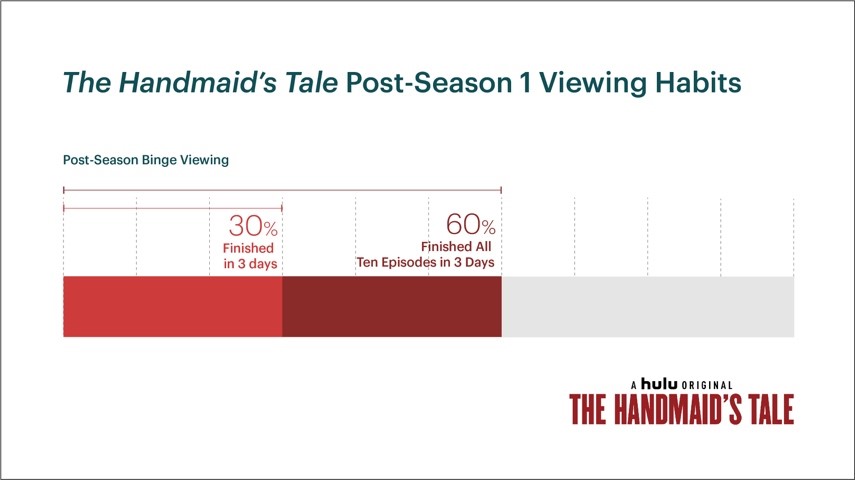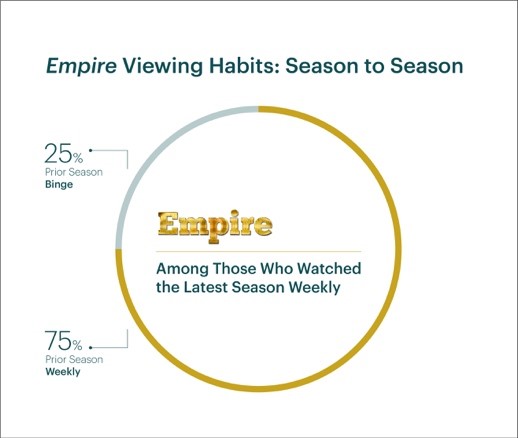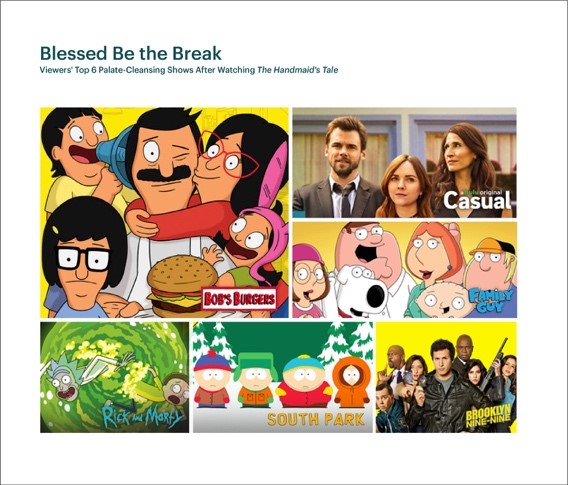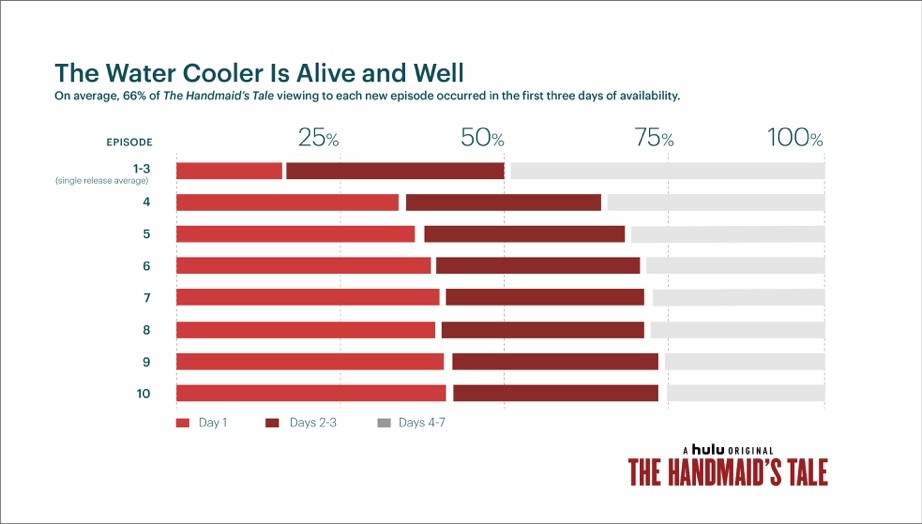Watching TV used to be a one-way relationship. Big studios would create content, sell it to one network and program it to air at one time, once a week. From there, viewers would have to rush home and see if there was a show for them, or choose another activity to occupy their time. That is the TV experience of the past. Today, with the proliferation of on-demand streaming services and major advances in technology, viewers can get the content of their choice when they want it, on their favorite device, wherever they want to watch and for as long as they choose. In fact, 60% of our viewers tell us they like to watch multiple episodes of a series in one sitting. Thirty-two percent prefer to watch week-to-week, and a very dedicated (and likely sleep-deprived) 8% will frequently choose to binge an entire season or series in a single day. To better understand the viewing habits of the bingers, the appointment viewers and everyone in between, Hulu Insights analyzed our massive store of viewer data to reveal three key findings that have emerged now that TV viewing is completely in the viewer’s control — what we call “the dynamics of choice.”
1. The Water Cooler Is Alive and Well
Emmy-winning drama The Handmaid’s Tale is one of 2017’s breakout hits, and our data reveals that it is the perfect example of appointment viewing in the on-demand space. New episodes were released every Wednesday and viewers turned up in droves — on average, 66% of viewing to each new episode occurred within the first three days of availability, and each week that percentage increased as new viewers came into the funnel.
The Handmaid’s finale drove a massive spike, but in the days following the views continued to roll in as new people started the series. Hulu’s instant, complete and unlimited availability sustains the life of the show.
Additionally, those who started The Handmaid’s Tale after the release of the season finale binged it in the true sense of the word, watching nearly three episodes on average per viewing session. About 60% of these new viewers finished all ten episodes in one week. And a highly-addicted 30% completed the season in just three days.

2. “Catching Up” Is Just Watching
The notion of “catching up” on a series — binging prior seasons in order to be current with newly released episodes or seasons — is beginning to fade, particularly in an environment where shows are available in perpetuity. What we’ve discovered is that viewers who exhibit a particular viewer behavior tend to retain that habit in subsequent seasons. In others words, if you watch weekly in one season, you’re more likely to do that for the next. Similarly, if you binge a season, you’re apt to do that again. There are certainly viewers that switch between these modes, or watch in some hybrid fashion, but they are in the minority. Take a look at Fox’s Empire: Among those who watched the latest season as new episodes were released, three out of four had done that for the prior season.

3. Moods Influence TV Selections
When we at Hulu Insights were little, we used to watch a lot of scary movies that we rented on VHS tapes. But since we didn’t want to go directly to bed with a brain primed for nightmares, we would turn on the TV in hopes of finding something to cleanse our palettes.
As it turns out, we’re not alone, but we no longer have to hope — we can choose! Hulu viewers pick specific content for mood-management conditions. Six of the top ten shows that viewers select immediately after concluding an intense episode of The Handmaid’s Taleare comedies — shows like Family Guy, Casual and Brooklyn Nine-Nine.

Interestingly, Law & Order: SVU also tops the ranks, which seemed counter-intuitive given the subject matter, until we began to consider why the franchise is so successful: It’s familiar, formulaic comfort food. For decades, viewers have been ending their TV nights with the L&O family.
These are just three examples that demonstrate the diversity of TV behaviors that emerge when content is abundant and control is entirely in viewers’ hands. The shift is here: Television has progressed from a static, scheduled platform to a dynamic and custom experience.

